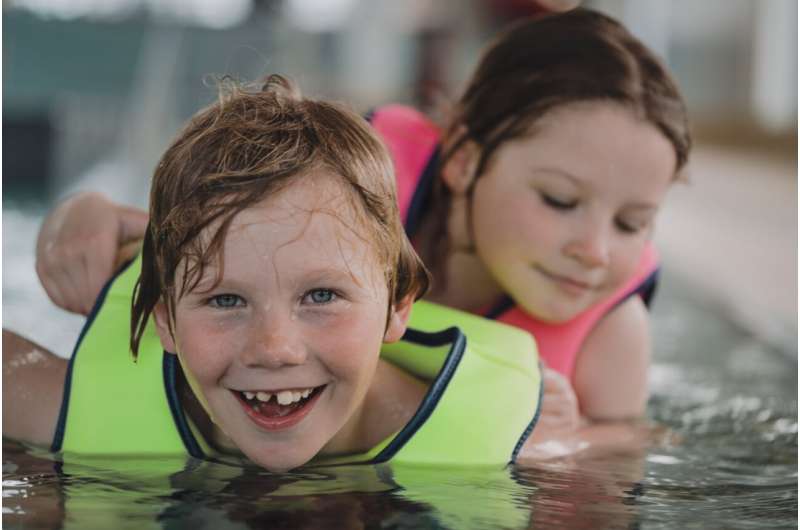This article has been reviewed according to Science X's editorial process and policies. Editors have highlighted the following attributes while ensuring the content's credibility:
fact-checked
reputable news agency
proofread
Q&A: Facial drooping in children

My husband and I recently noticed our 5-year-old daughter was having difficulty blinking and eating, and one side of her face was drooping. The pediatrician referred us to a plastic surgeon who diagnosed her with facial paralysis. What is facial paralysis and what are the treatment options? Will this require surgery?
ANSWER: Facial paralysis occurs when you cannot move some or all of the facial muscles. It can affect one or both sides of the face. Facial paralysis can disrupt eye closure, the smile and lower lip movement. It can cause asymmetrical facial muscle tone resulting in a sagging face. Though many people think of facial drooping as a sign of stroke, it can be among the first signs of facial paralysis, which is rare among children. When facial paralysis occurs in children, it impairs a child's ability to move their facial muscles and show facial expression.
It is essential to evaluate facial paralysis promptly as the cause of the paralysis informs the treatment approach. While some children are born with facial paralysis because of a developmental or congenital problem, it also can result from trauma, a tumor or another issue.
To diagnose the underlying reason for the paralysis, patients undergo a comprehensive workup, including clinical examinations and imaging. Electromyography (EMG) is a type of imaging used to confirm the presence of nerve damage and determine its severity. An MRI or CT scan may be performed to rule out whether there are sources of pressure on the facial nerve, such as a tumor or skull fracture, that could be causing the paralysis.
Treatment
A treatment plan is developed based on the diagnosis and the child's age. Treating facial paralysis does not always involve surgery and can range from offering physical therapy to injecting Botox to weaken other parts of the face to achieve symmetry. If surgery is the best treatment option for a patient, there are a few innovative approaches your plastic surgeon may consider.
Facial paralysis surgery also is called facial reanimation surgery and involves using muscles or nerves from other parts of the body to restore motion in the face.
Two standard procedures using muscles are called gracilis muscle transfer and temporalis muscle transfer. Using reconstructive microsurgery techniques, a surgeon transplants muscle from either the inner thigh (the gracilis muscle) or the temple (the temporalis muscle) under the facial skin and connects it to facial nerves to recreate a smile.
The gracilis muscle transfer is the favored approach to restore a symmetric, spontaneous smile and usually is performed in two stages. The first stage involves using some of the nerves from the other side of the face, called cross-face nerve grafting, and the second stage involves gracilis muscle transfer. This surgery aims to enable the working side of the face to control the paralyzed side, which is essential for facial harmony or spontaneity.
Another form of facial asymmetry can occur due to the irregular regrowth of nerve fibers after trauma or Bell's palsy. This may result in involuntary contractions of specific muscles when you're trying to move other muscles, called synkinesis. For example, when you smile, the eye on the affected side may close. Treatment of this asymmetry in the face includes physical therapy, Botox injections and occasionally selective neurectomy, a surgery that helps achieve a more balanced and symmetrical movement of the face.
If surgery is needed, patients can expect to stay in the hospital one to five days, depending on the procedure performed.
When faced with facial paralysis, it is essential to seek treatment from a plastic surgery team focused on facial paralysis and reanimation. At Mayo Clinic we are experienced in pediatric facial reanimation surgery and microsurgery. These delicate operations require specialized expertise and knowledge, especially when treating the littlest patients.
The multidisciplinary team at Mayo Clinic, which includes pediatric plastic and oculoplastic surgeons, neurologists, optometrists, and physical therapists, uses decades of knowledge to create individual treatment plans to help your child regain facial function and quality of life.
©2023 Mayo Clinic News Network. Distributed by Tribune Content Agency, LLC.


















